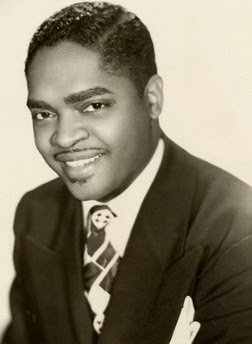The Robin Hood
2059 Jackson AvenueNew Orleans LA 70113
Like the Dew Drop Inn a few blocks up LaSalle Street, the Robin Hood included a swanky nightclub alongside a lunch counter and hotel serving Black guests at a time when they were refused service at white-owned businesses. While it is not remembered as widely as the Dew Drop, the Robin Hood played a key role in the formative years of rhythm and blues.
In 1946 the bandleader Paul Gayten took up a residency here with a small group including the guitar ace Edgar Blanchard, and, soon after, the now-legendary saxophonist Lee Allen. Vernon Winslow, the pioneering Black radio DJ known as Dr. Daddy-O, spoke to author Jeff Hannusch about Gayten: “[He] was smooth; cufflinks and cuffs, blue suits. He had a pudgy, pleasant smile, a kind of dominating person on the piano.”
When Gayten heard vocalist Annie Laurie in New Orleans while she was touring the Chitlin Circuit, he recruited her to stay in town and sing with his band. She became a draw at the Robin Hood and caught the ear of Al Young, owner of the Bop Shop, who connected Gayten and Laurie to the DeLuxe record label out of New Jersey. In January 1947 the group went into J&M Studio, recording “True” by Gayten, considered New Orleans’ first R&B hit, and “Since I Fell For You,” a signature tune for Laurie.
As Winslow recalled to Hannusch:
It seemed like when Paul Gayten and Annie Laurie had “Since I Fell For You,” and started working at the Robin Hood it was like the beginning of a brand new day here. It made people know that there was talent in New Orleans and [record companies] started coming out to see it.
In April 1947 a 21-year-old named Roy Brown approached bandleader Bob Ogden at the Robin Hood and asked to sing with the group. Ogden obliged, and later arranged music for a tune Brown had written called “Good Rockin’ Tonight.” The record, cut with Ogden’s band at J&M, was a smash for DeLuxe. Brown left his neighborhood gig at the Downbeat Club to tour the country, and his gospel-influenced shouting and suggestive lyrics (“Tonight she’ll know I’m a mighty, mighty man”) proved a national influence on the development of R&B.
In May 1948 a 20-year-old pianist named Antoine Domino got his musicians’ union card to play the Robin Hood with bandleader Billy Diamond, taking over the Sunday matinee from Gayten. According to Domino biographer Rick Coleman:
Domino’s style of playing was heavy-handed compared to Gayten’s smooth, jazzy stylings. Sitting with a drink and a cigarette, Annie Laurie turned to her guitarist and said, “…That piano player can’t sing or play.” The crowd thought differently, however….
The audience also embraced a new nickname for the pianist: making light of his girth, Diamond introduced him as Fats Domino. To Domino’s chagrin, the name stuck.
In 1949 bandleader Dave Bartholomew began rehearsing his group at the Robin Hood in the afternoons, when the club was empty. According to Billy Diamond, “When Dave saw what Paul [Gayten] was doing at the Robin Hood it really opened his eyes…. [Gayten] was a very good musician and expected the best out of the people that played with him.” Bartholomew earned a reputation as a taskmaster, not just on the bandstand but in the recording studio.
Imperial Records in Los Angeles recognized Bartholomew’s value as an A&R man and a producer. On his recommendation, the label paid for him to go into J&M with Domino in December 1949, where they cut “The Fat Man,” a hit considered by some to be the first rock and roll record. The two went on to collaborate on a string of hits that brought “the big beat” of drummer Earl Palmer and Domino’s left hand from Black New Orleans clubs to mainstream America.
Lee Allen, Gayten’s tenor saxophone man, became part of the New Orleans sound, too, as Bartholomew tapped him to join the house band at J&M Studio. The success of DeLuxe and Imperial recordings there made New Orleans a destination for other artists looking for a break, including youngsters Ray Charles and Little Richard. At the same time, Gayten and Bartholomew served as talent scouts for homegrown artists, keeping the New Orleans sound on radios and jukeboxes across the country.
For more on the roots of rock ‘n’ roll in New Orleans click here.
Videos

Dave Bartholomew and Herbert Hardesty recall their work with Fats Domino at the 2009 Ponderosa Stomp History Conference.
Video by The Ponderosa Stomp.
Dave Bartholomew and Herbert Hardesty recall their work with Fats Domino at the 2009 Ponderosa Stomp History Conference.
Images



















